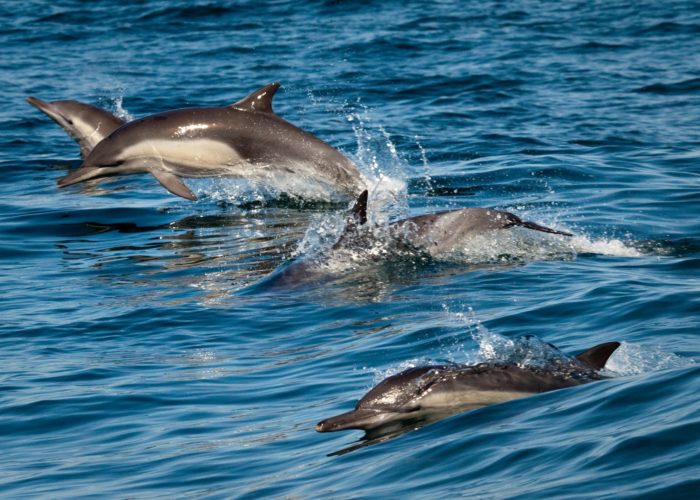
Five Fun Facts about Dolphins

Photo credit: Douglas Croft
March marks Dolphin Awareness Month! Dolphins play an important role in marine ecosystems as a top predator, and serve as “sentinel” species that provide insight about ocean health, ecosystem dynamics, and human impacts on the ocean. Follow along as we share five fun facts about our finned friends:
Take a deep breath! Dolphins have a single blowhole on the top of their head that they use for breathing air. Unlike humans, breathing is not an automatic reflex for these marine mammals. Dolphins must consciously think about taking a breath each time they reach the surface.
Good vibrations! Dolphins can “see” what’s nearby using a sort of sixth sense- a biological sonar called echolocation. Their oil-filled forehead (known as a melon) amplifies the sound waves they create by pushing air through their blowhole.
Dolphins aren’t all work and no play. These naturally curious cetaceans love to explore the world around them. They are intelligent creatures that demonstrate playful and inquisitive behaviors. Dolphins have been seen playing with objects such as seagrass, sponges, or other items they might find.
Dolphins know the importance of getting some shut-eye. Dolphins snooze one side of their brain at a time, with the opposite side active and alert to guide important tasks like breathing and swimming. Each half of their brain gets a break for a few minutes at a time- all day long!
Like all marine mammals, dolphins are protected under the Marine Mammal Protection Act of 1972. Dolphins face threats including accidental bycatch, entanglement in fishing gear, climate change, ship strikes, plastic and noise pollution, and habitat loss. In 2022, we joined the National Oceanic and Atmospheric Administration in celebrating the 50th anniversaries of landmark legislation like the Marine Mammal Protection Act, as part of 50 Years of Ocean and Coastal Conservation.

Photo credit: Chad King/NOAA

